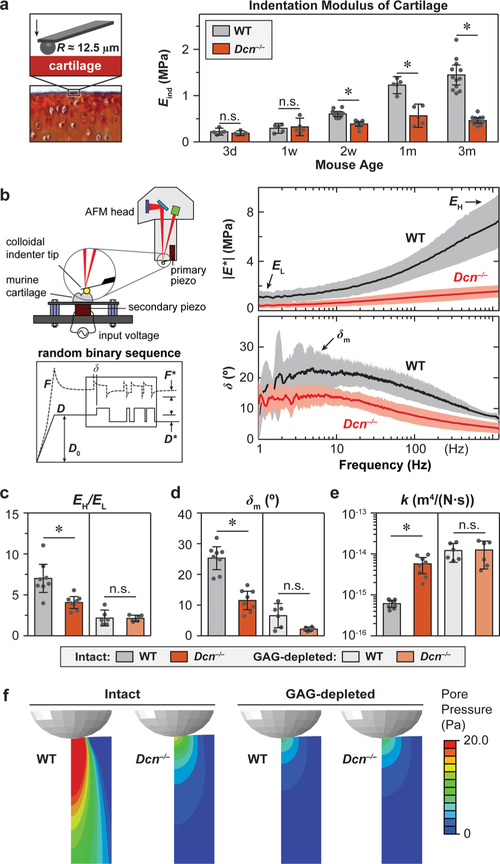Figure 2.
Decorin-null (Dcn−/−) cartilage exhibits impaired elastic and poroelastic mechanical properties. (a) AFM-nanoindentation detects lower indentation modulus of cartilage at 2-week, 1-month, and 3-month ages, but not at 3-day and 1-week ages (mean ± 95% CI, n ≥ 5, *: p < 0.01). (b) Left panel: Schematics of the custom-built nanorheometer integrated with the Dimension Icon AFM and representative force and displacement profiles that contain the dynamic oscillation in the form of a random binary sequence (RBS). Right panel: Representative frequency spectra of dynamic modulus |E*| and phase angle, δ, from intact WT and Dcn−/− medial condyle cartilage at 3-month age (mean ± 95% CI of ≥10 locations from each joint). (c–e) Poroelastic mechanical properties of intact and CS-GAG-depleted cartilage: (c) self-stiffening ratio, EH/EL, (d) maximum phase angle, δm, (e) hydraulic permeability, k (mean ± 95% CI from n ≥ 6 animals for each group, *: p < 0.01). (f) Maximum pore pressure calculated from the fibril-reinforced poroelastic finite element model at the peak frequency (~10 Hz) corresponding to δm. All the experiments were performed on medial condyle cartilage in 1× PBS with protease inhibitors using microspherical tips (R ≈ 12.5 μm, nominal k ≈ 16 N/m). Panels a, c–e: Each data point represents the average value of ≥10 locations measured from one animal.

